This vast country is undoubtedly one of the most culturally and geographically diverse places on earth. Fondly known by locals as the 'Rainbow Nation', South Africa has 11 official languages and its multicultural inhabitants are influenced by a fascinating mix of African, Asian, and European cultures.
Spend your days: discovering the gourmet restaurants, impressive art and nightlife scenes and fine beaches of Cape Town; enjoying a typical local braai (barbecue) in the Soweto township; browsing the bustling Indian markets in Durban; or sampling some of the world’s finest wines at the myriad wine estates dotted around the picturesque Cape Winelands.
Due to its rich and turbulent history there are plenty of historical attractions to explore including the Zululand battlefields of KwaZulu-Natal, the Apartheid Museum in Johannesburg and Robben Island, just off the coast of Cape Town.
Above all else, South Africa’s attraction lies in its remarkably untamed wilderness with its astonishing range of wildlife roaming freely across massive game reserves such as the world famous Kruger National Park.
With all of this variety on offer, it is little wonder that South Africa has fast become Africa’s most popular tourist destination.






Surrounded by subtropical fruit orchards, Hazyview is a small farming town and a gateway to the southern part of the Kruger National Park and the Panorama Escarpment.
The town and its scenic surroundings serve as a popular adventure capital with an array of outdoor activities on offer to suit all ages, tastes and fitness levels. These include, among others: mountain biking, quad biking, ziplining, tubing, abseiling and river rafting. Whether you are eager to hike the Panorama Route with its beautiful views and waterfalls, visit the Shangana Cultural Village, undertake a safari in the Park or go horse riding along the banks of the Sabie River, Hazyview has something for just about everyone. (ITT)
Connecting the Lowveld and the northern Drakensberg, sandwiched between the Kruger National Park and the Highlands Meander, the historical Panorama Route is a scenic road in the Mpumalanga and Limpopo Province.
The route features beautiful views of natural wonders, rock formations, waterfalls, scenic hiking trails, and a myriad of fauna and flora. The quaint small town of Graskop serves as the gateway to this wonderful route. The Panorama Route’s highlight is the Blyde River Canyon, one of the world's largest green canyons featuring subtropical vegetation.
Some other popular natural attractions along the route include the Lisbon, Berlin, and Mac Mac Falls, Bourke's Luck Potholes, the Three Rondavels, and the view from God’s Window. On clear days one can even see the Kruger National Park. The picturesque gold rush town of Pilgrim's Rest, a historic living museum, is not far off from Graskop, where the glass elevator is located, taking guests down into the Canyon. (ITT)





















At more than 2 million hectares, the Kruger National Park is one of the world’s largest game reserves and a truly remarkable destination. Kruger Park is the size of Israel and slightly smaller than Belgium.
The Kruger National Park is in northeastern South Africa. Its high density of wild animals includes the Big 5: lions, leopards, rhinos, elephants and buffalos. Hundreds of other mammals make their home here, as do diverse bird species such as vultures, eagles and storks. Mountains, bush plains and tropical forests are all part of the landscape.
Because of its exceptional size you can experience amazing diversity – from the scenery and ecosystems to the vast array of animals, trees and birds. A trip to the Kruger National Park is an unforgettable experience, with over 1800 kilometers of well maintained roads and 21 rest camps. (ITT)
eSwatini (previously known as Swaziland), a small, landlocked monarchy in Southern Africa, is known for its wilderness reserves and festivals showcasing traditional Swazi culture. Marking its northeastern border with Mozambique and stretching down to South Africa, the Lebombo Mountains are a backdrop for Mlawula Nature Reserve’s many hiking trails.
eSwatini encompasses a diverse array of ecosystems – towering mountains and low-lying savannah, tangled rainforests and lush river valleys. Highlights of this laid-back land include the beautiful ‘Valley of Heaven’, the handicraft haven of the Malkerns Valley with the famous Swazi Candles and Ngwenya Glassblowers and the Hlane Royal National Park, which is home to diverse wildlife including white rhinos,lions, hippos, antelopes and elephants. (ITT)
Resting east of the woodland region of Ezulwini Valley in the traditional country of eSwatini is the city of Lobamba. Famed for being the country’s cultural, spiritual and political heart, this fascinating destination boasts notable British-era buildings, informative museums and is host to sensational Incwala and Umhlanga ceremonies. Travellers can roam through the gardens of the commemorative King Sobhuza II Park; enjoy a leisurely 18-hole round of golf at the scenic Royal Swazi Golf Course, gain a greater insight into the nation’s history at the Swaziland National Museum, or delve into the culture at the fascinating Mantenga Cultural Village. Don’t miss the magnificent Mlilwane Wildlife Sanctuary, a lush park home to hiking and horse riding trails, as well as an abundance of wildlife, including zebra, giraffe and several bird species.












eSwatini (previously known as Swaziland), a small, landlocked monarchy in Southern Africa, is known for its wilderness reserves and festivals showcasing traditional Swazi culture. Marking its northeastern border with Mozambique and stretching down to South Africa, the Lebombo Mountains are a backdrop for Mlawula Nature Reserve’s many hiking trails.
eSwatini encompasses a diverse array of ecosystems – towering mountains and low-lying savannah, tangled rainforests and lush river valleys. Highlights of this laid-back land include the beautiful ‘Valley of Heaven’, the handicraft haven of the Malkerns Valley with the famous Swazi Candles and Ngwenya Glassblowers and the Hlane Royal National Park, which is home to diverse wildlife including white rhinos,lions, hippos, antelopes and elephants. (ITT)
This vast country is undoubtedly one of the most culturally and geographically diverse places on earth. Fondly known by locals as the 'Rainbow Nation', South Africa has 11 official languages and its multicultural inhabitants are influenced by a fascinating mix of African, Asian, and European cultures.
Spend your days: discovering the gourmet restaurants, impressive art and nightlife scenes and fine beaches of Cape Town; enjoying a typical local braai (barbecue) in the Soweto township; browsing the bustling Indian markets in Durban; or sampling some of the world’s finest wines at the myriad wine estates dotted around the picturesque Cape Winelands.
Due to its rich and turbulent history there are plenty of historical attractions to explore including the Zululand battlefields of KwaZulu-Natal, the Apartheid Museum in Johannesburg and Robben Island, just off the coast of Cape Town.
Above all else, South Africa’s attraction lies in its remarkably untamed wilderness with its astonishing range of wildlife roaming freely across massive game reserves such as the world famous Kruger National Park.
With all of this variety on offer, it is little wonder that South Africa has fast become Africa’s most popular tourist destination.
Zululand is the unofficial name of the northern sector of the province of KwaZulu-Natal, and lies north of the Tugela River. The further north towards eSwatini, (formerly known as Swaziland) you travel, the drier it gets and the more you will find bush type vegetation characterized by the majestic, green barked Fever Trees. As you head south towards Durban there are numerous pine and eucalyptus plantations, followed by the sugar cane growing region. Richards Bay is a deep water port, and is the largest city in Zululand.
The well watered valleys have been home to the proud Zulu Nation, their beautiful Nguni cattle and an abundance of wildlife for centuries. Today Zululand is a fascinating mix of tribal lands, game reserves, the UNESCO World Heritage Site, the Isamangaliso Wetlands Park, with its vegetated dunes, and commercial agriculture.(ITT)












As previously described
The Hluhluwe–Imfolozi Park is in KwaZulu-Natal. Proclaimed in 1895, it is the oldest park in Africa. Initially two separate reserves, Hluhluwe and Umfolozi, they were joined to create a single 96 000 hectare "Big Five" reserve which is home to one-fifth of the world's black and white rhino population. Apart from the other members of the "Big 5" (lion, leopard, elephant and buffalo), its rich plant-life, grasslands and forests support a wide variety of other game animals.
The north of the park is known as the Hluhluwe area. It is more rugged and mountainous with forests and grasslands, whilst in the Umfolozi area, found to the south near the Black and White Umfolozi rivers, there are some deep valleys, but also vast stretches of open savanna.
It was here that the internationally acclaimed Operation Rhino started in the 1960's, successfully capturing and relocating white rhino to reserves within South Africa and abroad. The Hluhluwe–Imfolozi Park was the first reserve to introduce walking safaris and its Wilderness Trails are internationally renowned.
The park offers a variety of accommodation and activities such as self guided walks, auto-trails and guided game drives. Being a national park, visitors are allowed to drive through the park in their own vehicle (a 4x4 is not required), but may only disembark at the official picnic sites. The viewing hides overlook pans and waterholes are particularly popular, as the enable visitors to see animals at close range and in an absolutely peaceful setting. (ITT)










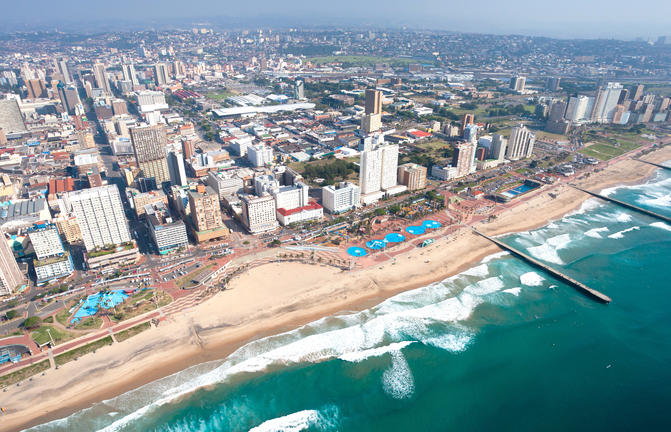
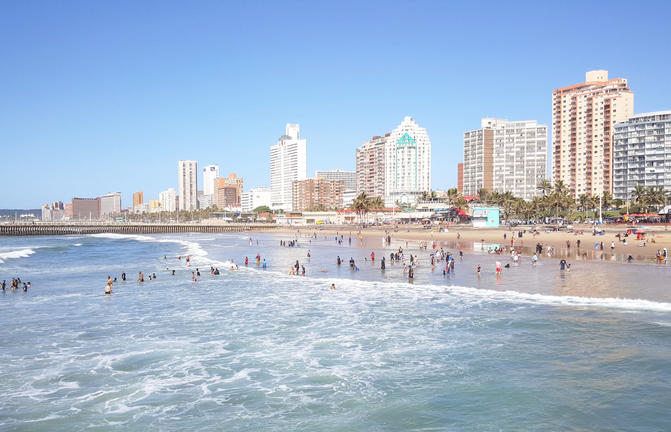
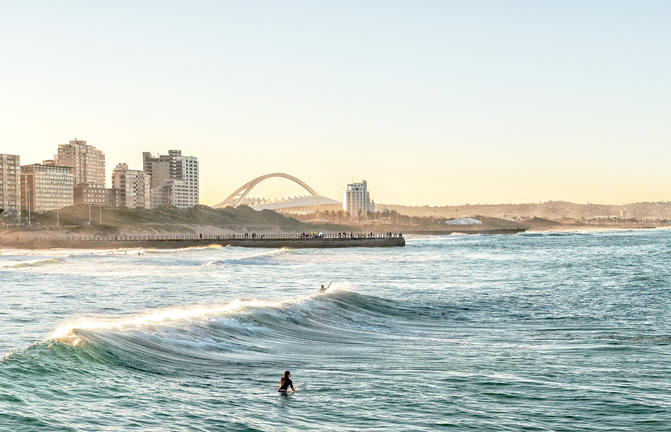
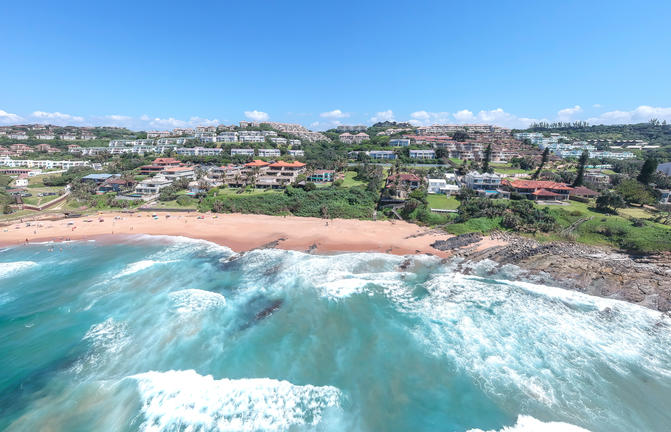
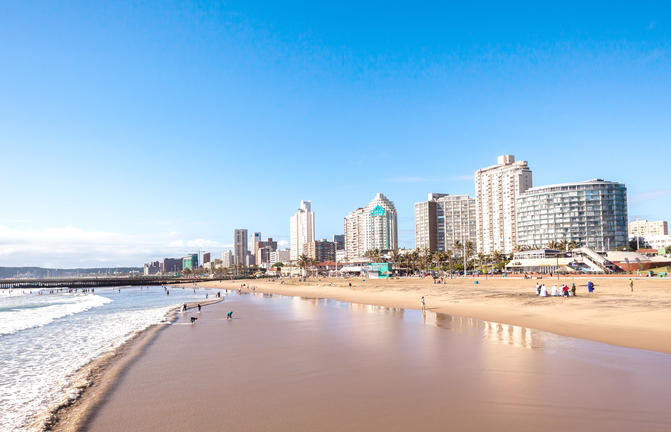
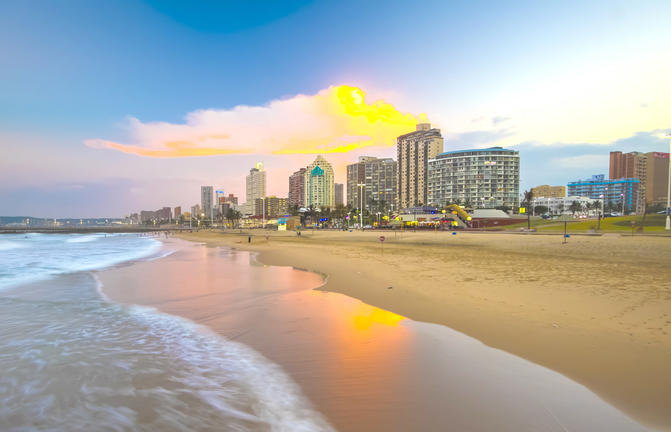
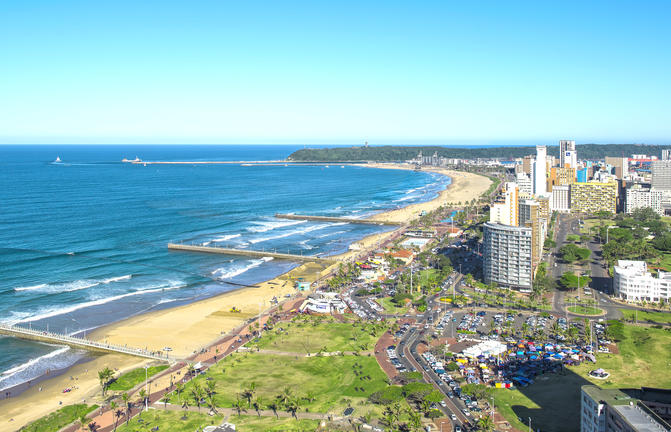
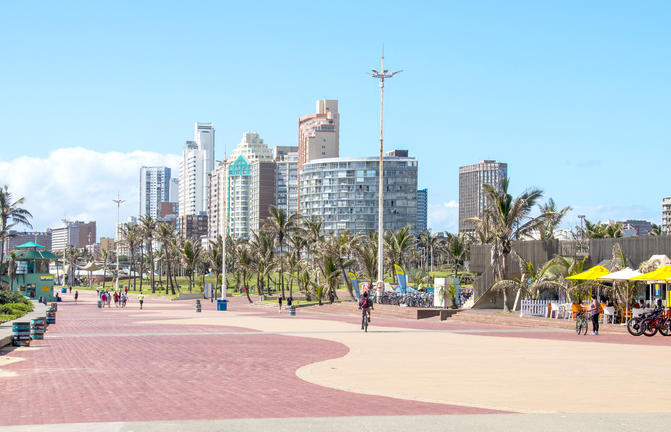
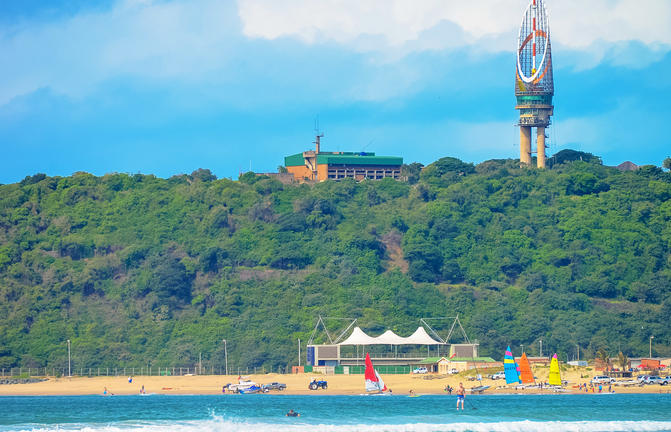
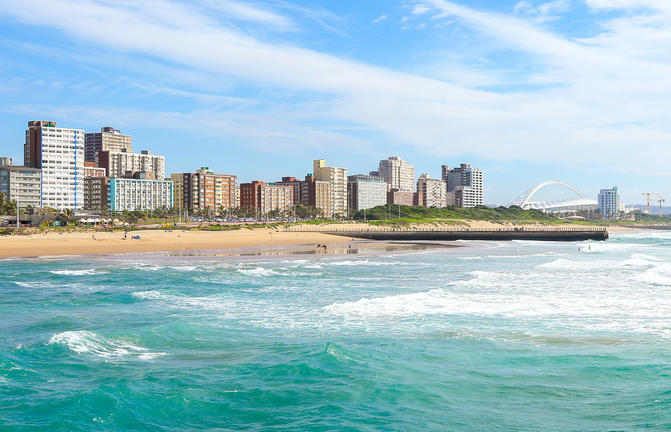
With its beautiful beaches, lively wining and dining scene, and rich cultural heritage, Durban is KwaZulu-Natal’s tourist hub. There is swimming and surfing available and because of the sub-tropical climate the water is warm all year round.(summer 25-28 degrees) Known as the Golden Mile, this stretch of beaches and amusement parks is Durban’s major attraction with the recently developed UShaka Marine World at the southern end providing a world class aquarium and other entertainments.
No trip to Durban is complete without having a Bunny Chow. This locally traditional meal is a hollowed out 1/4 or 1/2 loaf of bread, filled with curry (beef / lamb / chicken / vegetarian) and eaten with your hands. A true sample of local cuisine. (ITT)
iSimangaliso means miracle, or the greatest thing you will ever see. You won’t be let down when you first glance at the amazing ecosystems of the iSimangaliso Wetland Park. Centred around the Lake St Lucia lagoon system, Isimangaliso was declared a World Heritage Site in 1999.
The Park includes the lake, beaches, grasslands, dune forests and marine reserve. It is home to an exceptional biodiversity featuring over 500 bird species. It is the largest estuarine system in Africa and includes the southernmost extension of coral reefs. Among its attractions are the world's highest forested sand dunes, large numbers of nesting turtles, whales, dolphins, whale sharks and huge numbers of waterfowl including large breeding colonies of pelicans. In recent years, buffalo and elephant have been reintroduced onto the eastern shores of the lake, and lion to the western shores. (ITT)
















As previously described
Port Elizabeth or PE, is known as the Friendly City as well as the Windy City. Hopefully the former and not the latter will be remembered by its visitors.
Port Elizabeth was established to accommodate British settlers who were brought out on a government sponsored programme in 1820 to provide a buffer between the eastern boundary of the Cape Colony and the Xhosa people. The little port grew from there and today is the gateway to the Garden Route, as well as Eastern Cape’s many game reserves and beautiful beaches. (ITT)




















As previously described
Plettenberg Bay is a seaside town on the Garden Route in South Africa’s Western Cape Province. This town is a picturesque, charming town with miles of pristine beaches, lagoons, rivers, indigenous forests and a rocky peninsula. The sandy Central Beach and Lookout Beach both have surf breaks. To the south, Robberg Nature Reserve is a rocky peninsula with trails and the Stone Age Nelson Bay Caves. Northeast are Birds of Eden, a free-flight bird sanctuary in an indigenous forest, and an elephant sanctuary. Whales come near the coast in migration season.
While there are many fine restaurants, café’s and other eateries to choose from in the town, one of the most memorable must surely be the restaurant at the Beacon Isle Hotel. Built literally straddling a small strip of land between a lagoon and the sea, it almost seems when seated in the restaurant, that the hotel is floating on the water. (ITT)
















Situated along South Africa’s beautiful southern coast, the Tsitsikamma National Park is known for its ancient forests, pristine coastline and magnificent rivers. The Tsitsikamma National Park falls within the Garden Route National Park and encompasses a marine conservation belt which stretches five kilometres out into the ocean. It is home to diverse fauna and flora including over 9000 species of indigenous fynbos.
Visitors can look forward to hiking to the Big Tree, an ancient yellowwood, hiking on a good boardwalk through the beautiful indigenous forest to the suspension bridges over the Storms River Mouth and going on an exhilarating kayaking trip at Storms River Mouth. There are also a number of other activities including: cycling, swimming, zip lining, camping, snorkelling, diving, mountain biking, and sailing. (ITT)
Sandwiched between the Outeniqua and Tsitsikamma Mountains and the Indian Ocean, this lush 200-kilometre stretch of coastal plain between Mossel Bay and Storms River Mouth provides one of the world’s most spectacular drives.
Visitors typically base themselves at the heart of the Garden Route - either in Knysna, complete with its scenic lagoon; or neighbouring Plettenberg Bay, famous for its excellent beaches - and then spend a few days exploring countless surrounding attractions. Whether you are seeking pristine, uncrowded white-sand beaches, golf courses, forests, surf spots, nature reserves, hiking opportunities or outdoor adventures such as bungee jumping or ziplining, the Garden Route has it all. (ITT)
















As previously described
Oudtshoorn, a town in the Little Karoo, is famous for its ostriches and the fascinating Cango Caves. Located along the renowned Route 62 just an hour and a half from the Garden Route, Oudtshoorn is known as the Ostrich Capital of the World: these huge birds are almost as common as people in this charming town with its numerous "Feather Palaces", as the stately homes dotted around the town are called.
Other than ostriches and the feathers and meat they provide, the Oudtshoorn area also attracts visitors to the Cango Caves, the largest cave system in Africa, permeated with sparkling stalactites and stalagmites and captivating rock formations. It is also the gateway to the spectacular Swartberg Pass, which winds its way over the rugged Swartberg Mountains to the little Hamlet of Prince Albert. (ITT)





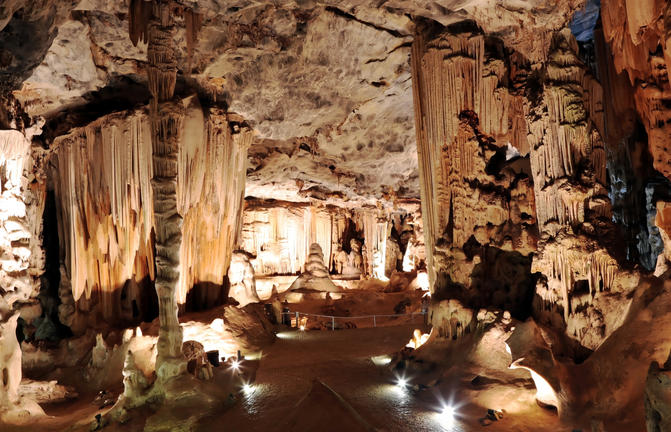
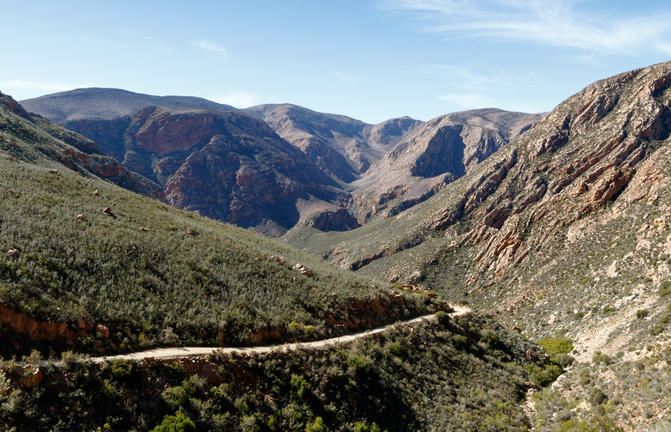







As previously described
Resting where the Indian and Atlantic Ocean meet, sandwiched between the slopes of Table Mountain and the sapphire waters of Table Bay, the exceptionally scenic city of Cape Town is in a class of its own. Some cities boast rich culture, vibrant nightlife, a cosmopolitan atmosphere and extraordinary architecture, while others boast landscapes and extraordinary natural wonders.
Cape Town is lucky enough to be blessed with all of these attractions and so much more. With its bustling harbour, world-class beaches, top-notch vineyards, and its mountainous surroundings brimming with diverse flora and fauna, Cape Town consistently captivates the hearts of all who visit. (ITT)
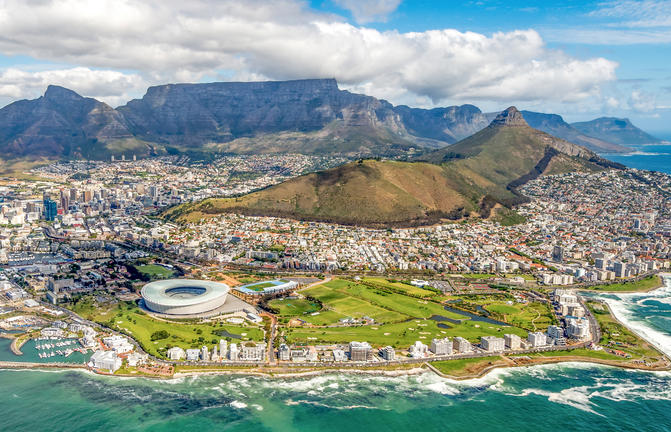
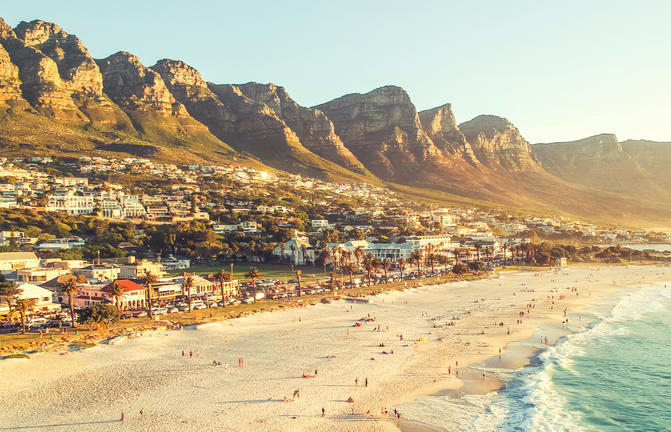
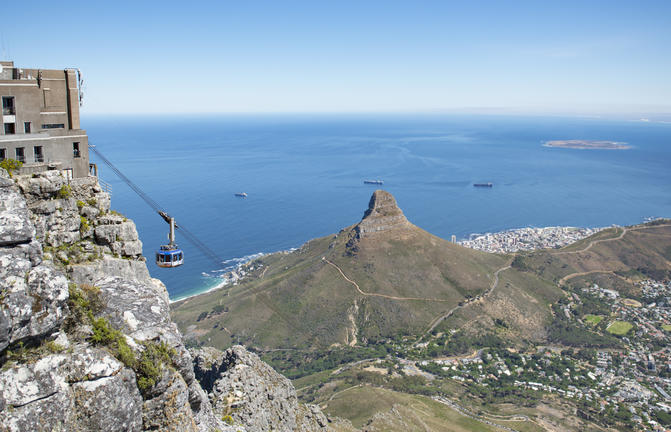
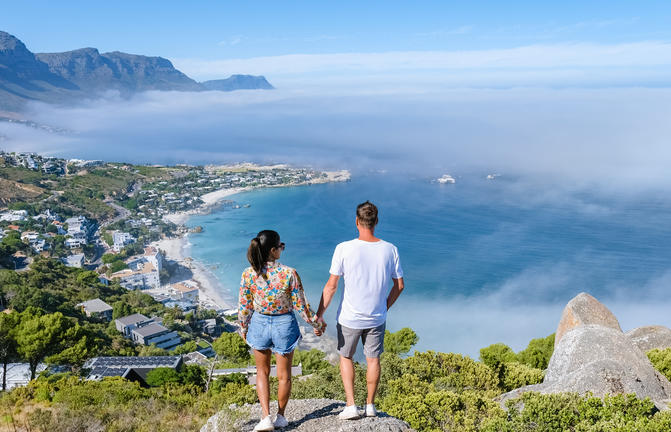
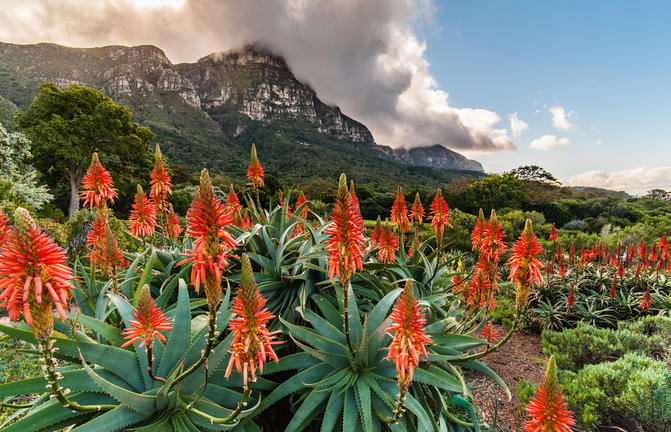
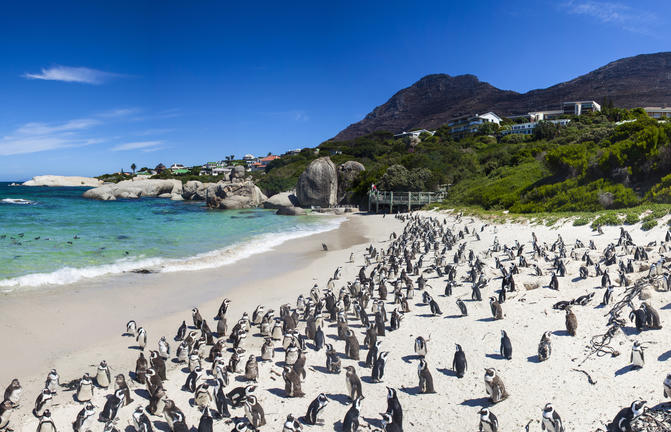
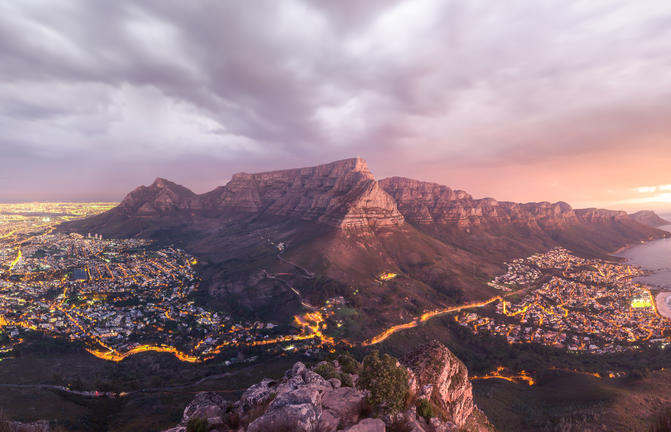
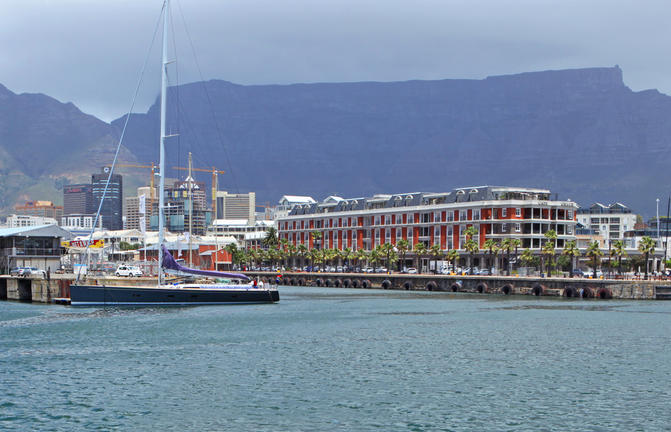
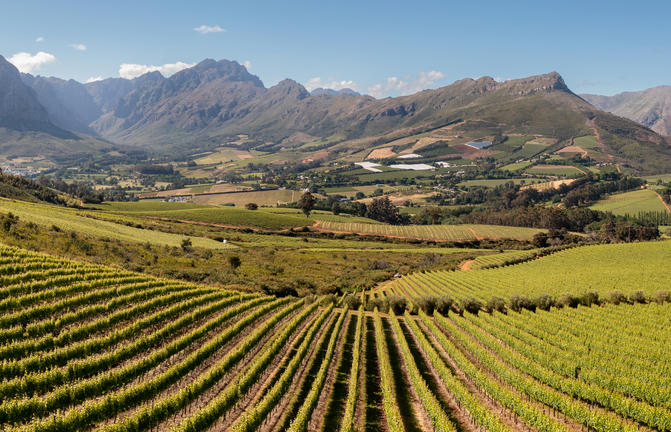

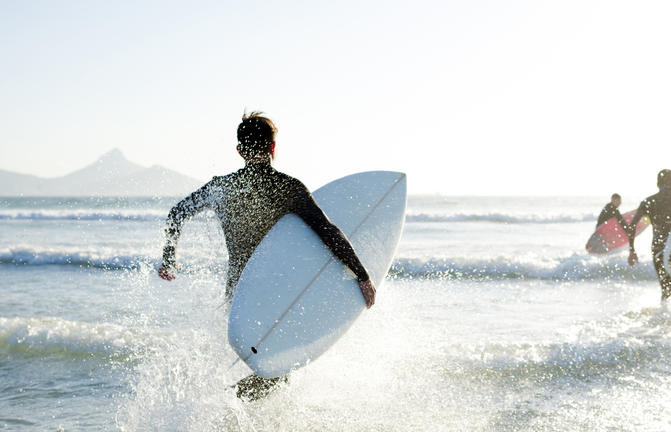
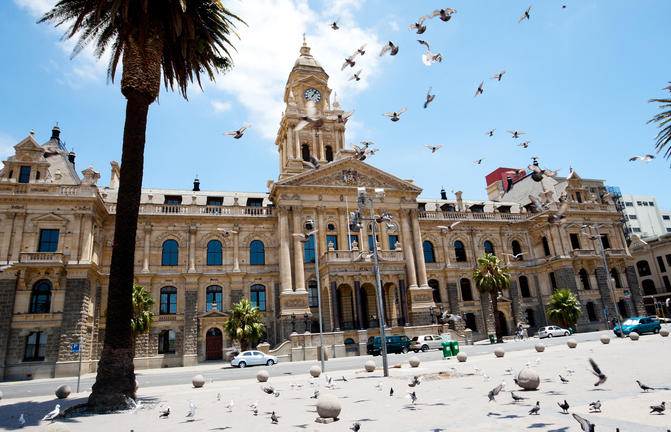
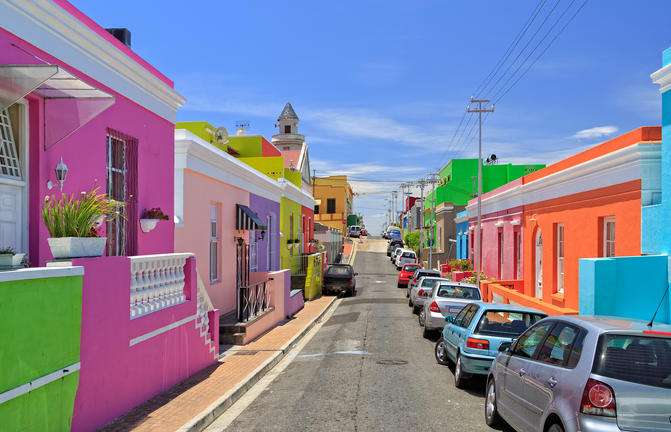
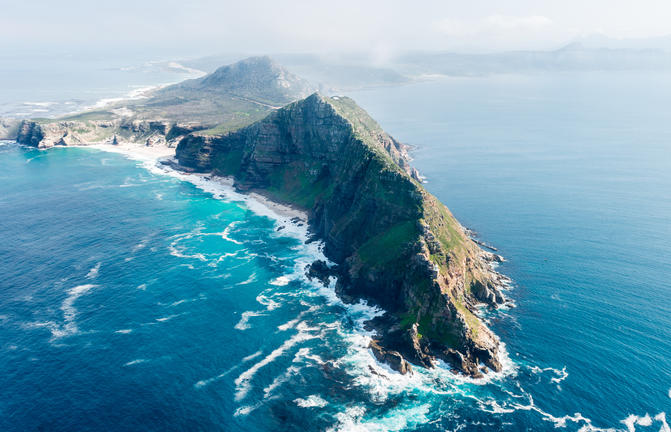
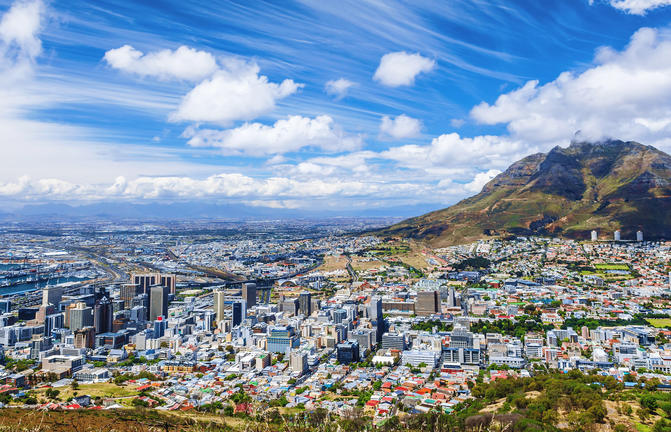
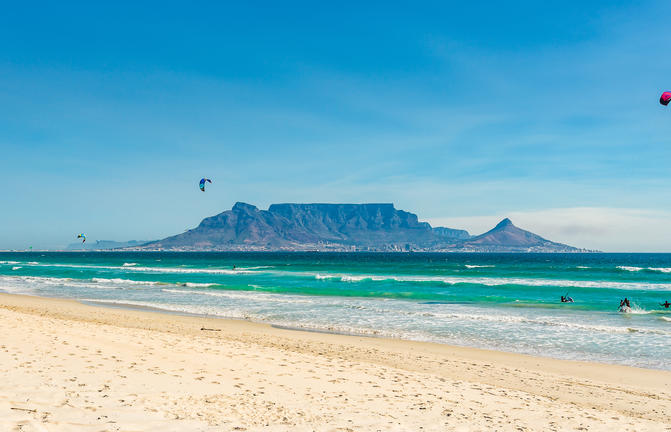
















As previously described
Extending into the Atlantic, the rugged Cape Peninsula marks the southwestern most point of the African continent. It features pristine white-sand beaches met by craggy mountains interspersed with quaint little coastal towns. Cape Point and the Cape of Good Hope can be found along the southern end of this spectacularly scenic peninsula, while the northern tip is crowned by the world-famous 1086 m high Table Mountain which towers over the city of Cape Town.
Visitors can look forward to a wide selection of activities including hopping on a boat ride to Seal Island from Hout Bay, exploring the magnificent Cape of Good Hope Nature Reserve, and viewing the colony of African penguins on Boulders Beach in Simon’s Town. Don’t miss the opportunity to take in the breathtaking views from the top of Table Mountain.(ITT)




















Resting at the foot of the Boland Mountains, the Cape Winelands is renowned for producing some of the world’s finest wines. The beautiful landscape boasts mountain scenery and numerous luxury wine farms laden with vineyards stretching across fertile valleys.
Visitors can look forward to a variety of wonderful activities including: exploring a collection of historic little hamlets and towns dotting the countryside, sampling a wide selection of world-class wine at a historic Cape Dutch farmstead as well as many other wine estates; and enjoying a network of hiking and biking trails traversing the picturesque landscape. While the wine is undoubtedly the highlight of the region, visitors can also enjoy a meal at some of the country’s best restaurants offering food and wine pairings. (ITT)

